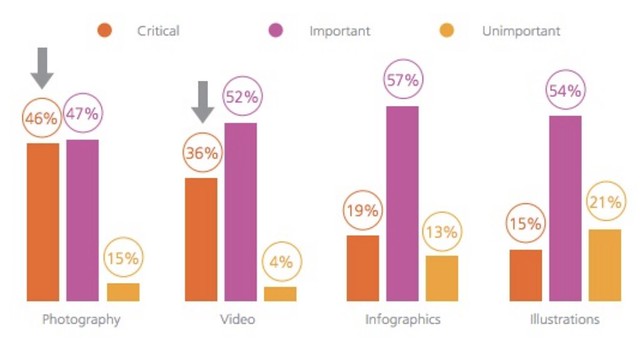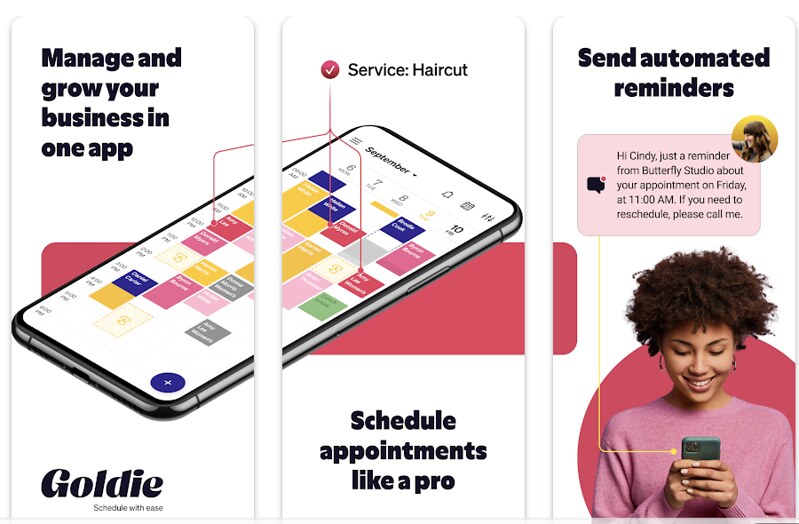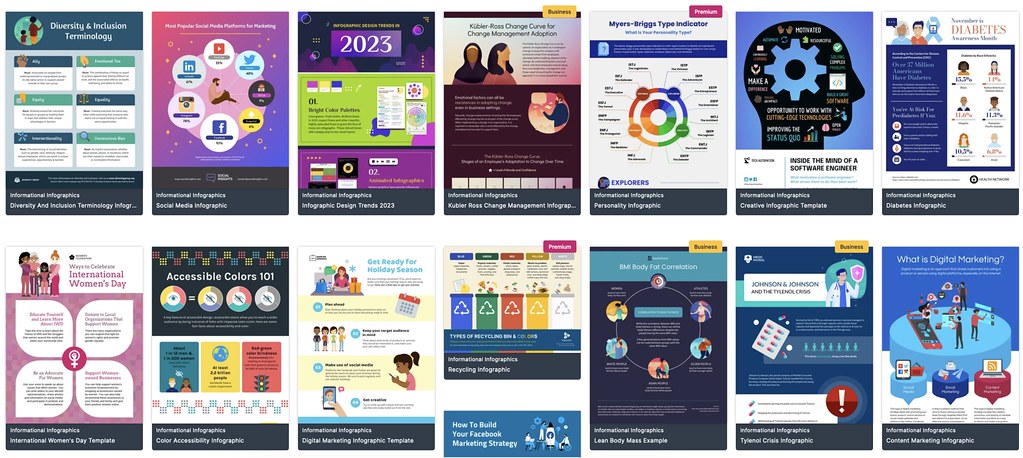[Updated 05/14/2023]
Visual content marketing is essential for better branding. Text-based content is losing its appeal and being replaced by visual content. The biggest advantage of visual content is …
Visual content grabs the attention
Researchers have found that looking at colors increases a person’s willingness to read an article. Mundane text copy has no color or design, only black text against a white/gray color background. It will never be as appealing as visual content, despite having informative content or a clickbait headline.
Visual content, on the other hand, can showcase great design and eye-catching font, grabbing the attention of the onlookers.
Ever wondered why content is essential for branding?
The average person now has a shorter attention span than a goldfish. Most visitors leave web pages within 2-3 seconds of landing. Visual content can grab your visitor’s attention and hold them on the site, thereby increasing the retention rate.
Visual content is more appealing than non-visual content, and it informs and retains customers. Unless a brand harnesses visual content to build its identity, it can never grab the attention of the audience.
Giving consumers instructions on how to use branded products is a simple way to build credibility. And visual content is the best medium for delivering instructions.
Product photography and branding
Doubt the effectiveness of product photography?
More than 45% of brands feel photography is crucial to their existing marketing techniques, and 65% of marketing executives consider photographs taken by professionals as visual assets for brand storytelling. See the stats below:

Product photography is way cheaper than video production and 3D rendering, both of which can cost an arm and a leg. A professional photograph of a product can create a lasting impression that stays, maybe not forever, but for a long time.
More importantly, brands can convey ideas and abstract elements through product photographs.
On social media, users can react to photographs. They can express their eagerness to know the full story. If the photos receive a high level of engagement, then Facebook will display them in more news feeds because that’s how Facebook’s algorithm works.
When people disagree with something shown to them in their news feed, they won’t like or share it. This applies to political commentaries and personal opinions, but product photographs do not qualify as any of these. There’s no question of agreeing or disagreeing and nothing can impede engagement.
Brands want audience engagement. When product photography, the newest addition into the fold of content marketing meets social media, audience engagement gets a boost, and visual branding turns into a huge success.
Image SEO is very important to make the most of your product photography. Make sure you optimize all kinds of image elements with your target keywords and use Schema to label these as product images. This way you will drive sales from these images:

WebCEO’s website audit tool to see if any of them are missing their “alt” attribute:

For WordPress, there are quite a few SEO plugins that make image optimization easier.
Visualizing customer service
The stats related to display and banner ads are discouraging. The average display ad CTR, regardless of the format and medium, is less than 1%. Ad blocking software usage grew by 41%, and it caused brands to lose almost $22 billion in 2015.
Publishers accessing these stats are clueless about how to complement the brand experience that ads deliver. Advertising humanizes a brand. The same can be accomplished by improving customer experience. The easiest way to humanize customer service is by using visual content. The task of offering visual customer service rests on the shoulders of the CCEs.
Social platforms are critical to visual customer service. Brands can leverage social media to interact with customers and take personalization to the micro-level. They can use free visual marketing tools to create funny avatars for each individual CCEs. Interacting with characters would be a fun-filled experience for customers.
Tutorial videos with animated characters can spice up an otherwise mundane experience and create engagement. It’s an offbeat approach, but when over 80% of brands are competing for customer experience this year, doing something out-of-the-box is the only way to beat the competitors.
Understanding your buying journeys will also help you shorten them. For example, if your business is providing services, use this scheduling app to allow your customers to schedule appointments with your team, and manage reminders and payments:

Additionally, small business phone services allow you to manage phone calls more effectively.
Free tools or paid tools?
Paid tools are better in this regard. Venngage is one such tool. It can create high-quality, professional-looking infographics and animated videos.

Tools like Vistaprint allow you to move your visual marketing offline and create branded merch. Here are also free branding mockups to help you create great designs.
Use paid tools for visual content creation because 1) the price is not over the top. If you run a business, you can pay for it. If you are a freelancer, you can still pay it. 2) The tools have many innovative features that free tools lack. Remember, free usability tools may improve the user experience, but when it comes to promoting a brand, these tools can never be on par with their paid counterparts.
Conclusion
Visual content marketing is a double-edged sword. If done right, it can bring a high volume of search and social traffic. If done wrong, it can throw a wrench into the initiatives, taken to solidify branding. So be careful when applying it.





































